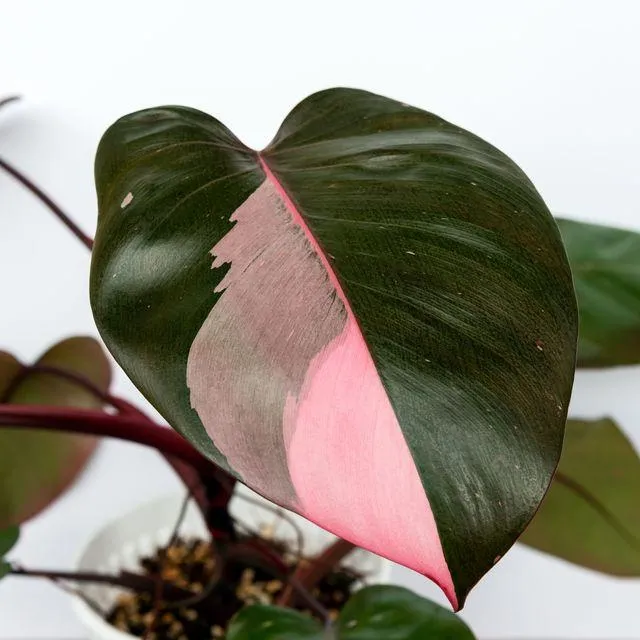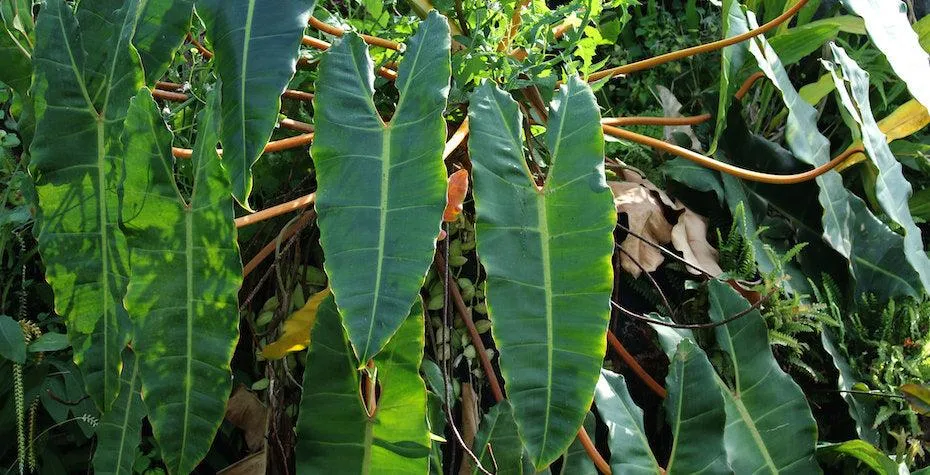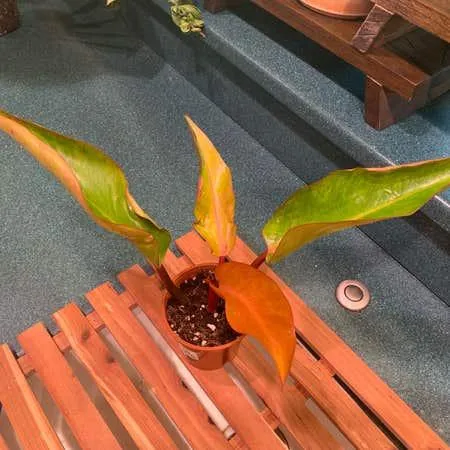Everything You Need to Know About Philodendron Variegated Plants
Philodendron variegatum, commonly known as a variegated philodendron or split-leaf philodendron, is one of the most popular varieties of this popular houseplant genus. Its leaves showcase streaks or patches of creamy white against a backdrop of dark green, making it a real eye-catcher. But beyond just its attractive appearance, what do you need to know about caring for this plant? In this comprehensive guide, I’ll answer all your questions about philodendron variegated plants.
Identification
Variegated philodendrons can be identified by their heart-shaped leaves with splotchy white or yellow variegation. The leaves emerge green and gain their white splotching as they mature. Stems are typically green or reddish. Variegated philodenrons grow as vines with overlapping leaves. They can climb as high as trees in their native tropical habitats but are usually grown as trailing plants indoors.
Origin and Growing Conditions
Philodendron variegatum is native to tropical rainforests in Central and South America. In nature, it climbs up trees to reach sunlight. Indoors, it thrives in medium to bright, indirect sunlight. It prefers temperatures between 65-80°F. Soil should be well-draining potting mix. Maintain consistent moisture by watering when the top inch of soil is dry. This plant is hardy but overwatering can cause root rot, so allow the soil to dry out between waterings.
Care Tips
- Fertilize monthly in spring and summer with a diluted houseplant fertilizer to encourage lush growth.
- Mist leaves occasionally to increase humidity levels around the plant. Variegated philodendrons appreciate humidity over 50%.
- Prune off any yellow or brown foliage to keep the plant looking full and healthy.
- Rotate the plant regularly so it grows symmetrically. The stems will twist towards the light source.
- Repot in spring every 1-2 years using a pot with drainage holes and a soil mix tailored for houseplants.
Pruning and Propagation
Philodendron variegated varieties are very easy to propagate from stem or leaf cuttings. Simply remove 4-6 inch sections from the vine, strip lower leaves, and place the cutting in water or moist soil. Roots will form within 2-4 weeks. Once established, the new plant can be potted up. You can also start new plants by removing offshoots that form at the nodes along the main vine. Prune off damaged or dying leaves and stems regularly to maintain a bushy shape.

Pests and Problems
Like most houseplants, variegated philodendrons are susceptible to common pests. Spider mites cause stippling on leaves. Isolate and spray with water or insecticidal soap. Mealybugs appear as cottony masses and secrete honeydew. Wipe with alcohol. Scale looks like bumps on stems or undersides of leaves – scrape off with a fingernail. Provide good growing conditions to ward off disease. Watch for root rot from overwatering – improve drainage and reduce watering schedule.
Caring for a New Plant
When first bringing home a new variegated philodendron, ease it into its new environment gradually. Place it in indirect light and check soil moisture daily, watering just enough to keep the top inch moist. Monitor new growth or yellowing over the next few weeks. Cut off any unhealthy foliage. Once new growth appears, you can increase light levels if needed. Be especially careful not to overwater, as this is the #1 cause of death for new plant purchases. Taking it slow aids transition and ensures a healthy start.
Proper Placement
Variegated philodendrons display beautifully cascading over shelves or hanging baskets. They add lovely greenery with the bonus of colorful foliage. Position in spots with morning or afternoon sun away from direct rays. Rooms with high humidity like bathrooms are ideal. Avoid dry rooms with heating vents. Place within reach of other plants for visual appeal but give it space to display draping vines. Rotate occasionally so it grows evenly. A diamond-patterned support can help achieve maximum height.
Uses and Benefits
Besides their stunning foliage, variegated philodendrons offer some nice advantages as indoor plants. Their tolerance of low light means they thrive in areas beneath other plants or indoors where insufficient sunlight prevents other varieties from flourishing. And their compact size makes them a versatile choice for apartment living where space may be limited. Easy care means they deliver beauty with minimal effort. Participating in their care provides therapeutic benefits like stress relief and connection to nature. Their ability to help filter indoor air of chemicals and improve indoor air quality makes them a great choice for any room!

From my experience growing indoor plants, variegated philodendrons are real troopers that deliver colorful foliage with Low-maintenance care. They basically take neglect like a champ yet reward you with new growth, especially if you give them moisture and warmth. I’ve had situations where other plants got crispy under my care, but these guys just kept on thriving! A philodendron is a solid choice for anyone venturing into plant parenthood and wanting an easy-care option that offers cool leaves. Carefully follow the tips in this guide and your variegated philodendron should bring you many years of joy. Let me know if you have any other questions!
Key Facts About Variegated Philodendron Plants
| Variety | Care Level | Light Requirements | Watering Needs | Growth Rate |
|---|---|---|---|---|
| Philodendron ‘Birkin’ | Low | Bright Indirect | Allow soil to dry slightly between waterings | Moderate |
| Philodendron ‘Prince of Orange’ | Low | Bright Indirect | Water when top inch of soil is dry | Moderate |
| Philodendron ‘White Knight’ | Low | Bright Indirect | Water when top inch of soil is dry | Moderate |
| Philodendron ‘Xanadu’ | Low | Bright Indirect | Water when top inch of soil is dry | Moderate |
| Philodendron ‘Pink Princess’ | Low | Bright Indirect | Allow soil to dry slightly between waterings | Slow |
FAQ
-
What is a philodendron variegated plant?
A philodendron variegated plant is a type of variegated philodendron. It’s basically a philodendron with leaves that have other colors in them besides just plain green. The different colors can be white, yellow, or pink usually.
-
How fast do philodendron variegated plants grow?
Philodendron variegated plants can grow sort of quickly if they get the right conditions. They like humidity and indirect sunlight. If they get those things, they may put out a new leaf every month or so during the growing season. Still, their growth isn’t super fast – they won’t double in size overnight or anything.
-
What care do philodendron variegated plants need?
The care for a philodendron variegated is very similar to a regular philodendron. It needs medium to bright indirect light, consistent moisture in the soil (never let it fully dry out), and moderate fertilizer during the growing season. Clean its leaves occasionally if they get dusty. You also want to make sure not to move it around too much, as variegated plants can sometimes “lose their variegation” if stressed.

-
Do philodendron variegated plants need pruning?
You usually don’t have to prune philodendron variegated plants, but you can if you want to shape them or control their size. If pruning, cut stems right above a leaf node. However, sometimes variegated plants revert back to plain green if pruned, so try only pruning mature plants that have established their variegation well. It’s safer to let new growth fill out the plant naturally.
-
Are philodendron variegated plants toxic to pets?
Yes, many varieties of philodendron, including variegated types, can be toxic to cats and dogs if ingested. The sap may cause mild to severe irritation or vomiting. It’s best to keep variegated philodendron plants out of reach if you have pets.
While philodendron variegated plants can make amazing houseplants, it’s important not to take their care needs lightly. They need the right conditions like humidity to keep their variegation patterns vibrant and defined. At the same time, their toxic nature means keeping them where pets can’t get to them for safety. Perhaps a hanging basket out of reach would be ideal? Quote dr. houseplant: “a happy variegated philodendron is a thing of beauty – but they must be treated with care.” Overall they’re low maintenance as long as you water appropriately and give them decent light.
Do philodendron variegated plants need staking or support?
It really depends on the variety, but some larger-leaved variegated philodendron may eventually need some kind of support. As the stems get longer, they can sort of droop over if the leaves are heavy. You could basically use stakes or moss poles, or even tie them to a hanging basket or moss frame. It’s not totally necessary, but it helps them keep a nicer shape as they mature.

So in summary – variegated philodendrons are low-maintenance plants that can add amazing colors to your home. But you do need to meet their basic needs of humidity, light and watering to keep them happy. They also usually aren’t fast growers, so patience is key if you want them to develop a fuller shape. With the proper care they can be stunning houseplants that you enjoy for years. Let me know if any other questions come up!
